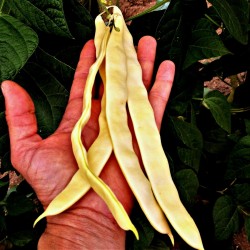Menu
-
MenuBack
- Home
-
Categories
-
-
Categories
-
Vegetable Seeds
-
Varieties by Country
- Varieties from Armenia
- Varieties from BiH
- Varieties from Croatia
- Varieties from France
- Varieties from Germany
- Varieties from Greece
- Varieties from Hungary
- Varieties from India
- Varieties from Italy
- Varieties from Japan
- Varieties from North Macedonia
- Varieties from Peru
- Varieties from Russia
- Varieties from Serbia
- Varieties from Slovenia
- Varieties from Spain
- Varieties from Thailand
- Varieties from Turkey
- Varieties from USA
- Tomato Seeds
- Corn Seeds
- Gourd family
- Bean family
- Cucumber Seeds
- Pepper Seeds
- Carrot family
- Onion family
- Lettuce Seeds
- Potato family
- Cabbage family
- Radish Seeds
- Beetroot family
- Watermelon Seeds
- Melon Seeds
- Cauliflower Seeds
- Sunflower family
-
Varieties by Country
- Fruit Seeds
- Chili - Habanero Seeds
- Medicinal Herb Seeds
- Climbing Plants Seeds
- Trees Bonsai Seeds
- Palm Seeds
- Ornamental Grasses Seeds
- Tobacco Seeds
-
Vegetable Seeds
-
-
-
-
- NEW PRODUCTS
- Create account
- Delivery - Payment
- FAQ
Last Product Reviews
These peppers came all the way from eastern Europe and took a while at no f...
By
 Fitim Berani on 21/09/2023
Fitim Berani on 21/09/2023
Verified Purchase
Last customers
- Tanja, Beograd, Serbia
- Alaa, Alwajh, Saudi Arabia
- ionescu, valu lui traian, Romania
- Lasse, 2900, Norway
- Pete, Cleves, United States
- Stef, Waalwijk, Netherlands
- Sonia, Minervino di Lecce, Italy
- Adrian, Ingolstadt, Germany
- CORINNE, NOTRE DAME DE LONDRES, France
- Dušan, KRAVANY NAD DUNAJOM, Slovakia
- Arno, Ehrenkirchen, Germany
- Costas, LARNACA , Cyprus
- Fulvio francesco, Santa Domenica Talao, Italy
- william, Dun, France
- Aymeric , Saint tricat, France
- Ricard, Sant Celoni, Spain
- Maureen , Enniscorthy Co Wexford , Ireland
- Paul, St. Vigil in Enneberg (BZ), Italy
- Ricardo jorge , Viseu , Portugal
- Radosav, Kragujevac, Serbia
- Sylvie, Neyruz, Switzerland
- Julien, Scionzier, France
- Zoran, Vinca, Serbia
- Josef, Hochdorf-Assenheim, Germany
- Davide, London, United Kingdom
- Kimberly, Victoria, Gozo, Malta
- Saša , Beograd, Serbia
- Ewa, Galway, Ireland
- Ioannis , Kato Achaia, Greece
- Samuele, Milano, Italy
There are 77 products.
Showing 61-72 of 77 item(s)
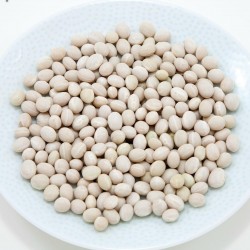
Zenit white pearl bean seeds
Price
€1.25
SKU: VE 78
Seeds Gallery Com,
5/
5
<h2><strong>Zenit white pearl bean seeds</strong></h2>
<h2><span style="color: #ff0000;" class=""><strong>Price for Package of 20 (3,5g) seeds.</strong></span></h2>
<p>Zenit is a white pearl bean of early ripening, vegetation 100-110 days. It has a solid tree with multiple floors. The pods are 7-8 cm long with 5-6 grains. It is quick and uniformly cooked and tastes great. It is resistant to disease.</p>
<h3><strong>Growing Guide</strong></h3>
<h3><strong>GROWING NOTES</strong></h3>
<p>Beans generally do not respond well to transplanting and are usually direct sown around or just after the last spring frost. The most important point about growing beans is not to plant them too early. They will rot in cool, damp soil. Even so, many beans require a long growing season of 80 days or more. To get an earlier start, you can put down black plastic, to warm the soil.</p>
<p>Most beans should be sown with the eye of the been facing downward, 1-2" deep, approximately 4-6" apart, with 24" or more between rows. The ideal site will be sunny, well-drained, moderately fertile, and slightly acidic (pH 6.0-7.0). Additionally, bean plants should be well-ventilated to promote proper development and deter mildew or mold that can trouble plants. Beans should not be grown in the same spot more than once every four years and can be mutually beneficial with corn, strawberries, and cucumber. Avoid planting beans near onion or fennel.</p>
<p>Plant bush beans in either rows or blocks, with 4-6 inches between each seed. Plant the seeds 1-2 inches deep and be sure to water the soil immediately and regularly, until it sprouts. Pole beans will need some type of support to grow on. Be sure the trellis, teepee, fence or whatever is in place before you seed. Plant seeds at a rate of about 3-6 seeds per teepee or every 6 inches apart.</p>
<h3><strong>MAINTAINING</strong></h3>
<p>When watering, try to avoid getting the leaves wet as this can promote fungus or other damaging conditions that beans can be susceptible to. Most types of beans are somewhat drought resistant, but check the surface of the soil frequently and water when the top layer has become dried out.</p>
<p>Once established, beans generally will not require fertilizing and will generate their own nitrogen. However, if the leaves of young plants are pale this is an indication of nitrogen deficiency and starts can be fertilized with fish emulsion or other natural nitrogen-rich fertilizer.</p>
<p>Bush beans begin producing before pole beans and often come in all at</p>
<p>once. Staggered planting, every 2 weeks, will keep your bush beans going longer. Pole beans need time to grow their vines before they start setting beans. The pole bean crop will continue to produce for a month or two.</p>
<p>Pole beans may need some initial help in climbing. Keep the bean plants well watered. Mulch helps keep their shallow roots moist. Long producing pole beans will benefit from a feeding or a side dressing of compost or manure about halfway through their growing season.</p>
<h3><strong>Harvesting Guide</strong></h3>
<h3><strong>HARVESTING</strong></h3>
<p>Harvesting beans is an ongoing process. You can start to harvest anytime, but gardeners usually wait until the beans begin to firm up and can be snapped. They are generally about as think as a pencil then. Don't wait too long, because beans can become overgrown and tough almost overnight. Harvest by gently pulling each bean from the vine or by snapping off the vine end, if you are going to be using the beans right away.</p>
<p>Depending on whether the bean is a snap, shell, or dry variety will impact when and how the bean should be harvested.</p>
<p>Snap beans are harvested while the pod and enclosed seeds are still relatively immature. Compared to the other two types of beans, snap beans have the smallest window for an ideal crop. Beans that are harvested too early will not develop the proper flavor and texture. On the other hand, beans that are allowed to develop on the plant too long will be tough and somewhat unpalatable. Perhaps the best simple indicator for snap beans is the diameter of the pods. Generally, most varieties will yield the best snap beans with a diameter between ⅛-1/4". Maybe the best way to determine suitability for harvest is to sample a pod or two before making a complete harvest. It is worth noting that many varieties of snap beans that are allowed to develop completely also make good dry beans.</p>
<p>Shell beans are harvested at a later time than snap beans, once the pods have started to fill out and the enclosed seeds developing inside are apparent. Beans of such varieties are removed from pods and are often eaten fresh, but are sometimes dried.</p>
<p>Dry beans are not harvested until the pods and enclosed seeds have reached complete maturity, and will often require threshing to remove extraneous pod material. When growing dry beans, it is especially important that growing plants have plenty of space and ventilation so that pods will dry out. If experiencing a spell of rain late in the season once pods have matured, plants can be removed from the ground and hung upside down indoors to allow desiccation to continue.</p>
<h3><strong>SAVING SEEDS</strong></h3>
<p>It is suggested that you earmark a couple of plants at the beginning of the season for seed saving. Don't pick ANY pods from them to eat - just pick the crisp brown pods at the end of the season. Don't feed them, or water them unless it is very dry - as this can encourage leafy growth rather than pod development. There is no point in picking green pods as the seeds are not mature enough at this stage.</p>
<p>Did you know you can save the roots, overwinter in a frost-free place, and replant next year? Runner beans are perennial but are frost sensitive, so die back in our climate. However, if the roots are dug up and kept in suitable conditions, the plants often get away early and crop faster. If you grow a lot of beans, this may not be a practical option, but you could try it with one or two plants perhaps. Store the roots in a frost-free place, buried in slightly moist sand or leafmould, or something similar.</p><script src="//cdn.public.n1ed.com/G3OMDFLT/widgets.js"></script>
VE 78 (3.5g)


Variety from Peru
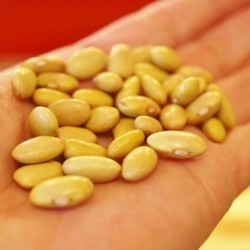
Canario, Mayocoba, Peruano,...
Price
€1.75
SKU: VE 126 (9g)
Seeds Gallery Com,
5/
5
<h2><strong>Canario, Mayocoba, Peruano, Peruvian Bean seeds</strong></h2>
<h2><span style="color: #ff0000;" class=""><strong>Price for Package of 15 (9g) seeds.</strong></span></h2>
<p>A small oval bean with thin skin and creamy, rich, buttery texture. Common in Latin American cooking, it needs full soaking time to soften up. It's also called Peruano, Peruvian, or Mayocoba.</p>
<p>Peruvian Beans are a yellowish ivory color and are similar in texture to a pinto bean when cooked. Canary beans are also called "Peruvian" or "Mayocoba". This sulfur colored yellow bean is produced in all the coast and Andean valleys of Peru, Mexico, and in the past 10 years, in the USA as well.</p>
<p>Canary beans are considered the King of Beans by Latin chefs because of its texture and rich and buttery flavor.</p>
<p>The Mayacoba, or Canary Bean, was named after a small village in Mexico where this new version of an old Incan food product was "re-invented". They have a unique taste and it is said that they will not give the consumer the usual digestive reaction that other beans can give. Mayacoba Beans are yellow and about the size of a pinto bean.</p><script src="//cdn.public.n1ed.com/G3OMDFLT/widgets.js"></script>
VE 126 (9g)


Variety from America
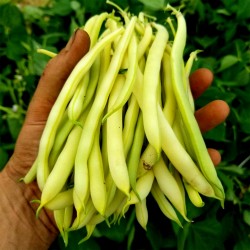
Cherokee Wax Bean Seeds
Price
€1.95
SKU: VE 147 (3g)
Seeds Gallery Com,
5/
5
<!DOCTYPE html>
<html>
<head>
<meta http-equiv="Content-Type" content="text/html; charset=UTF-8" />
</head>
<body>
<h2><strong>Cherokee Wax Bean Seeds</strong></h2>
<h2><span style="color: #ff0000;"><strong>Price for Package of 10 seeds.</strong></span></h2>
<p>Cherokee Wax is a popular bush variety that is noted for a productive, dependable plant that withstands adverse weather conditions and resists disease. This All America Selections Winner produces 5 to 6 inches long, Stringless even when mature.</p>
<p>Unlike most bean varieties, Cherokee Wax stays tender when frozen, also good canned or fresh. yellow wax beans with fine flavor, tender, slightly nutty flavor.</p>
<p>The plant's upright growth habit keeps the pods clean. Fruits pods ripening within 50 days.</p>
</body>
</html>
VE 147 (3g)

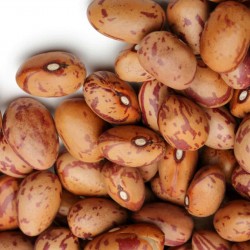
Inka Beans Seeds
Price
€1.45
SKU: VE 151 (7g)
Seeds Gallery Com,
5/
5
<h2><strong>Inka Beans Seeds</strong></h2>
<h2><span style="color: #ff0000;" class=""><strong>Price for Package of 20 (7g) seeds.</strong></span></h2>
<p>An old native variety of beans grown by the Inca people in Central America. It belongs to the type of colorful squat beans. Pods dark green. When ripe, they turn lemon yellow.</p>
<p>The length of the pod is 7-10 cm with 4-6 grains. The grain is a light drape color with brownish-marble patterns. Vegetation length of 115 days. The young pods may also be harvested and cooked like green beans.<br>Plants remain low.</p><script src="//cdn.public.n1ed.com/G3OMDFLT/widgets.js"></script>
VE 151 (7g)

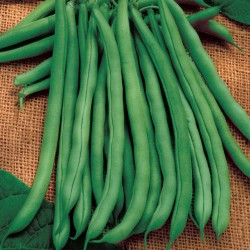
Babylon Bean Seeds
Price
€1.65
SKU: VE 150 (3,5g)
Seeds Gallery Com,
5/
5
<h2><strong>Babylon Bean Seeds</strong></h2>
<h2><span style="color: #ff0000;"><strong>Price for Package of 20 seeds.</strong></span></h2>
<p class="">Recommended for growing outdoors. It has an erect branch position, the stem of which is a well-kept plant that is not subject to lodging. <br>The pods have a regular shape of dark green color, round cross-section, and sweet taste.</p>
<p>The length of the pod is 120-140 mm and the diameter is 7-8 mm. Due to the erect position of the branches and the high position of the pods, this variety is easy to pick.</p><script src="//cdn.public.n1ed.com/G3OMDFLT/widgets.js"></script>
VE 150 (3,5g)

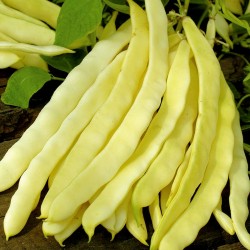
Odir green beans seeds
Price
€1.65
SKU: VE 152 (4,5g)
Seeds Gallery Com,
5/
5
<h2><strong>Odir green beans seeds</strong></h2>
<h2><span style="color: #ff0000;"><strong>Price for Package of 20 seeds.</strong></span></h2>
<p>Odir green beans are a medium-early variety, low, bushy green beans with yellow pods. The pods are wide, flat, 16 cm long. The seeds are medium in size and white in color. Attractive-looking beans are suitable for both fresh use and deep freezing.</p>
<p>Green beans (Phaseolus vulgaris) is an annual plant. When we talk about green beans as a plant, we actually mean the plant of ordinary beans, which is grown because of its immature pods, which can be green or yellow, and which also contain unripe fruits.</p>
<p>The fruit of the green bean is a pod. It can be cylindrical, saber-shaped or sickle-shaped, and round, elliptical, semi-flat and flat in cross section. The root is less developed and is mostly in the surface layer of the soil. The root can reach a depth of 70cm. It forms a multitude of nodules on the veins with bacteria that bind free nitrogen from the air. The tree can be bumpy (high) or low (squat). In the form of tall trees can reach a height of up to 3m, and low forms develop a branched shrubby tree with short internodes, 30-45cm high. The leaves are spirally arranged along the tree. The flowers are gathered in an inflorescence, which grows in the axils of the petioles. The pod is a fruit of green beans and can be of different shape, color and size, depending on the variety and method of cultivation.</p>
<p>Green beans are a crop that has a wide growing area. It grows best in a mild, moderately humid area. Green beans have great heat needs in all periods of their cultivation. Seeds germinate and germinate at temperatures above 10 ° C. In the early phase of development and growth, there is an extremely high need for light. In the absence of light, young plants elongate and this adversely affects growth and development.</p><script src="//cdn.public.n1ed.com/G3OMDFLT/widgets.js"></script>
VE 152 (4,5g)


Variety from Serbia
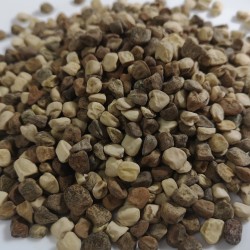
Colorful Indian Pea Seeds...
Price
€2.15
SKU: VE 47 S (6.5g)
Seeds Gallery Com,
5/
5
<!DOCTYPE html>
<html>
<head>
<meta http-equiv="Content-Type" content="text/html; charset=UTF-8" />
</head>
<body>
<h2><strong>Colorful Indian Pea, Blue Sweet Pea Seeds (Lathyrus sativus)</strong></h2>
<h2><span style="color: #ff0000;"><strong>Price for Package of 6,5 g (30) seeds.</strong></span></h2>
<p>Lathyrus sativus, also known as grass pea, blue sweet pea, chickling pea, chickling vetch, Indian pea, white pea and white vetch, is a legume (family Fabaceae) commonly grown for human consumption and livestock feed in Asia and East Africa.[4] It is a particularly important crop in areas that are prone to drought and famine, and is thought of as an 'insurance crop' as it produces reliable yields when all other crops fail. The seeds contain a neurotoxin that causes a neurodegenerative disease when the seeds are consumed as a primary protein source for a prolonged period.</p>
<h3><strong>Cultivation</strong></h3>
<p>Lathyrus sativus grows best where the average temperature is 10–25 °C and average rainfall is 400–650 mm (16–26 in) per year. Like other legumes, it improves the nitrogen content of soil. The crop can survive drought or floods,[3] but grows best in moist soils. It tolerates a range of soil types from light sandy through loamy to heavy clay, and acid, neutral, or alkaline soils. It does not tolerate shade.</p>
<h3><strong>Uses</strong></h3>
<p>Seed is sold for human consumption at markets in Florence. Consumption of this pulse in Italy is limited to some areas in the central part of the country, and is steadily declining.</p>
<p>Flour made from grass peas (Spanish: almorta) is the main ingredient for the gachas manchegas or gachas de almorta.[6] Accompaniments for the dish vary throughout La Mancha. This is an ancient Manchego cuisine staple, generally consumed during the cold winter months. The dish is generally eaten directly out of the pan in which it was cooked, using either a spoon or a simple slice of bread. This dish is commonly consumed immediately after removing it from the fire, being careful not to burn one's lips or tongue.</p>
<p>Due to its toxicity, it is forbidden in Spain since 1967 for human consumption. It can be sold as animal feed but it cannot be displayed near other flours valid for human consumption (BOE-2484/1967. September 21st. Paragraphs 3.18.09 a and b and 5.36.16 b)</p>
<p>Grass pea flour is exceedingly difficult to obtain outside of Castilla-La Mancha, especially in its pure form. Commercially available almorta flour is mixed with wheat flour because grass peas are toxic if consumed in significantly large quantities for prolonged periods of time.</p>
<p>The town of Alvaiázere in Portugal dedicates a festival lasting several days to dishes featuring the pulse. Alvaiázere calls itself the capital of Chícharo, the name of this pulse in Portuguese.</p>
<p>Immature seeds can be eaten like green peas. L. sativus needs soaking and thorough cooking to reduce toxins.</p>
<p>The leaves and stem are cooked and eaten as chana saga (Odia: ଚଣା ଶାଗ) in parts of Odisha, India.</p>
<p><strong>Seed ODAP characteristics</strong></p>
<p>Like other grain legumes, L. sativus produces a high-protein seed. The seeds also contain variable amounts of a neurotoxic amino acid β-N-oxalyl-L-α,β-diaminopropionic acid (ODAP).[7][8] ODAP is considered the cause of the disease neurolathyrism, a neurodegenerative disease that causes paralysis of the lower body: emaciation of gluteal muscle (buttocks).[3] The disease has been seen to occur after famines in Europe (France, Spain, Germany), North Africa, and South Asia, and is still prevalent in Eritrea, Ethiopia, and Afghanistan (panhandle) when Lathyrus seed is the exclusive or main source of nutrients for extended periods. ODAP concentration increases in plants grown under stressful conditions, compounding the problem.</p>
<p>The crop is harmless to humans in small quantities, but eating it as a major part of the diet over a three-month period can cause permanent paralysis below the knees in adults and brain damage in children, a disorder known as lathyrism.</p>
</body>
</html>
VE 47 S (6.5g)


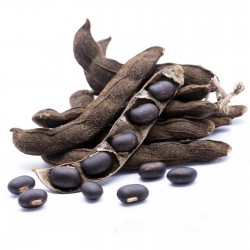
Velvet Bean Seeds (Mucuna...
Price
€2.85
SKU: P 88 MP
Seeds Gallery Com,
5/
5
<h2 class=""><strong>Velvet Bean Seeds (Mucuna pruriens)</strong></h2>
<h2><span style="color: #ff0000;"><strong>Price for Package of 5 seeds.</strong></span></h2>
<p><i><b>We have in offer Mucuna pruriens with white and black seeds. Choose under the color option seeds color.</b></i></p>
<p><i><b>Mucuna pruriens</b></i><span> is a tropical </span>legume<span> native to Africa and tropical Asia and widely naturalized and cultivated.</span><sup id="cite_ref-GRIN_2-0" class="reference"></sup><span> Its English </span>common names<span> include </span><b>monkey tamarind</b><span>, </span><b>velvet bean</b><span>, </span><b>Bengal velvet bean</b><span>, </span><b>Florida velvet bean</b><span>, </span><b>Mauritius velvet bean</b><span>, </span><b>Yokohama velvet bean</b><span>, </span><b>cowage</b><span>, </span><b>cowitch</b><span>, </span><b>lacuna bean</b><span>, and </span><b>Lyon bean</b><span>.</span><sup id="cite_ref-GRIN_2-1" class="reference">[2]</sup><span> The plant is notorious for the extreme itchiness it produces on contact,</span><sup id="cite_ref-ReferenceA_3-0" class="reference"></sup><span> particularly with the young foliage and the seed pods. It has agricultural and horticultural value and is used in </span>herbalism<span>.</span></p>
<p>The plant is an annual climbing shrub with long vines that can reach over 15 metres (50 ft) in length. When the plant is young, it is almost completely covered with fuzzy hairs, but when older, it is almost completely free of hairs. The leaves are tripinnate, ovate, reverse ovate,<span> </span>rhombus-shaped or widely ovate. The sides of the leaves are often heavily grooved and the tips are pointy. In young<span> </span><i>M. pruriens</i><span> </span>plants, both sides of the leaves have hairs. The stems of the leaflets are two to three millimeters long (approximately one tenth of an inch). Additional adjacent leaves are present and are about 5 millimetres (0.2 in) long.</p>
<p>The flower heads take the form of axially arrayed<span> </span>panicles. They are 15–32 centimetres (6–13 in) long and have two or three, or many flowers. The accompanying leaves are about 12.5 millimetres (0.5 in) long, the flower stand axes are from 2.5–5 millimetres (0.1–0.2 in). The bell is 7.5–9 millimetres (0.3–0.4 in) long and silky. The<span> </span>sepals<span> </span>are longer or of the same length as the shuttles. The crown is purplish or white. The flag is 1.5 millimetres (0.06 in) long. The wings are 2.5–3.8 centimetres (1.0–1.5 in) long.</p>
<p>In the fruit-ripening stage, a 4–13 centimetres (2–5 in) long, 1–2 centimetres (0.4–0.8 in) wide, unwinged, leguminous fruit develops. There is a ridge along the length of the fruit. The husk is very hairy and carries up to seven seeds. The seeds are flattened uniform ellipsoids, 1–1.9 centimetres (0.4–0.7 in) long, .8–1.3 centimetres (0.3–0.5 in) wide and 4–6.5 centimetres (2–3 in) thick. The<span> </span><i>hilum</i>, the base of the<span> </span><i>funiculus</i><span> </span>(connection between placenta and plant seeds) is a surrounded by a significant<span> </span><i>arillus</i><span> </span>(fleshy seed shell).</p>
<p><i>M.pruriens</i><span> </span>bears white, lavender, or purple<span> </span>flowers. Its seed pods are about 10 cm (4 inches) long<sup id="cite_ref-Rätsch_4-0" class="reference">[4]</sup><span> </span>and are covered in loose, orange hairs that cause a severe itch if they come in contact with skin. The itch is caused by a protein known as<span> </span>mucunain.<sup id="cite_ref-Reddy_5-0" class="reference">[5]</sup><span> </span>The seeds are shiny black or brown<span> </span>drift seeds.</p>
<p>The dry weight of the seeds is 55–85 grams (2–3 oz)/100 seeds.</p>
<h2><span class="mw-headline" id="Uses">Uses</span></h2>
<p>In many parts of the world,<span> </span><i>Mucuna pruriens</i><span> </span>is used as an important<span> </span>forage,<span> </span>fallow<span> </span>and<span> </span>green manure<span> </span>crop.<span> </span>Since the plant is a<span> </span>legume, it<span> </span>fixes nitrogen<span> </span>and fertilizes soil. In<span> </span>Indonesia, particularly<span> </span>Java, the beans are eaten and widely known as 'Benguk'. The beans can also be fermented to form a food similar to<span> </span>tempe<span> </span>and known as<span> </span>Benguk tempe<span> </span>or 'tempe Benguk'.</p>
<p><i>M. pruriens</i><span> </span>is a widespread fodder plant in the tropics. To that end, the whole plant is fed to animals as<span> </span>silage, dried hay or dried seeds.<span> </span><i>M. pruriens</i><span> </span>silage contains 11-23% crude protein, 35-40% crude fiber, and the dried beans 20-35% crude protein. It also has use in the countries of<span> </span>Benin<span> </span>and<span> </span>Vietnam<span> </span>as a biological control for problematic<span> </span><i>Imperata cylindrica</i><span> </span>grass.<sup id="cite_ref-tropical_7-1" class="reference">[7]</sup><span> </span><i>M. pruriens</i><span> </span>is said to not be invasive outside its cultivated area.<sup id="cite_ref-tropical_7-2" class="reference">[7]</sup><span> </span>However, the plant is invasive within conservation areas of South Florida, where it frequently invades disturbed land and<span> </span>rockland hammock<span> </span>edge habitats. Cooked fresh shoots or beans can also be eaten. The plant contains relatively high (3–7% dry weight) levels of<span> </span>L-DOPA; some people are sensitive to L-DOPA and may experience nausea, vomiting, cramping, arrhythmias, and hypotension. Up to 88% of the L-DOPA can be extracted from<span> </span><i>M. pruriens</i><span> </span>by boiling and soaking for approximately 48 hours. The efficiency of the process can be slightly improved by using approximately 0.25-0.50% sodium bicarbonate.<sup id="cite_ref-8" class="reference">[8]</sup></p>
<h3><span class="mw-headline" id="Traditional_medicine">Traditional medicine</span></h3>
<p>The seeds of<span> </span><i>Mucuna pruriens</i><span> </span>have been used for treating many dysfunctions in Tibb-e-Unani (Unani Medicine).<sup id="cite_ref-Amin_9-0" class="reference">[9]</sup><span> </span>It is also used in<span> </span>Ayurvedic medicine.</p>
<p>The plant and its extracts have been long used in tribal communities as a toxin antagonist for various snakebites. It has been studied for its effects against bites by<span> </span><i>Naja</i><span> </span>spp. (cobra),<sup id="cite_ref-10" class="reference">[10]</sup><span> </span><i>Echis</i><span> </span>(Saw scaled viper),<sup id="cite_ref-11" class="reference">[11]</sup><span> </span><i>Calloselasma</i><span> </span>(Malayan Pit viper) and<span> </span><i>Bangarus</i><span> </span>(Krait).<sup class="noprint Inline-Template Template-Fact">[<i><span title="This claim needs references to reliable sources. (November 2019)">citation needed</span></i>]</sup></p>
<p>It has long been used in traditional<span> </span>Ayurvedic<span> </span>Indian medicine in an attempt to treat diseases including<span> </span>Parkinson's disease.<sup id="cite_ref-DoubleBlind_12-0" class="reference">[12]</sup><span> </span>It has been investigated in low income regions of the world as an alternative treatment for Parkinson's disease due to its high content of<span> </span>L-dopa.<sup id="cite_ref-13" class="reference">[13]</sup><span> </span>Mucuna prurien seeds have been recognized for their ability to significantly alleviate neurotoxocity induced by Parkinson's disease.<sup id="cite_ref-14" class="reference">[14]</sup></p>
<p>Dried leaves of<span> </span><i>M. pruriens</i><span> </span>are sometimes smoked.<sup id="cite_ref-Rätsch_4-1" class="reference">[4]</sup></p>
<h2><span class="mw-headline" id="Itch-inducing_properties">Itch-inducing properties</span></h2>
<p>The hairs lining the seed pods contain<span> </span>serotonin<span> </span>and the protein<span> </span>mucunain<span> </span>which cause severe<span> </span>itching<span> </span>when the pods are touched.<sup id="cite_ref-ReferenceA_3-1" class="reference"></sup><sup id="cite_ref-toxicology_15-0" class="reference"></sup><sup id="cite_ref-16" class="reference"></sup><span> </span>The calyx below the flowers is also a source of itchy spicules and the stinging hairs on the outside of the seed pods are used in some brands of<span> </span>itching powder.<sup id="cite_ref-ReferenceA_3-2" class="reference">[3]</sup><sup id="cite_ref-joglekar_17-0" class="reference">[17]</sup><span> </span>Scratching the exposed area can spread the itching to other areas touched. Once this happens, the subject tends to scratch vigorously and uncontrollably and for this reason the local populace in northern Mozambique refer to the beans as "mad beans" (<i>feijões malucos</i>). The seed pods are known as "Devil Beans" in Nigeria.<sup id="cite_ref-18" class="reference"></sup></p>
<h2><span class="mw-headline" id="Pharmacology">Pharmacology</span></h2>
<p>The seeds of the plant contain about 3.1–6.1%<span> </span>L-DOPA,<sup id="cite_ref-toxicology_15-1" class="reference"></sup><span> </span>with trace amounts of<span> </span>serotonin,<span> </span>nicotine, and<span> </span>bufotenine.<sup id="cite_ref-19" class="reference"></sup><span> </span>One study using 36 samples of seeds found no<span> </span>tryptamines<span> </span>present.<sup id="cite_ref-20" class="reference">[20]</sup><span> </span><i>M. pruriens</i><span> </span>var.<span> </span><i>pruriens</i><span> </span>has the highest content of L-dopa. An average of 52.11% degradation of L-dopa into damaging<span> </span>quinones<span> </span>and reactive oxygen species was found in seeds of<span> </span><i>M. pruriens</i><span> </span>varieties.</p>
<script src="//cdn.public.n1ed.com/G3OMDFLT/widgets.js"></script>
VE 178 B (5 S)

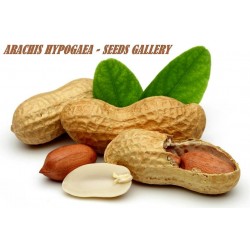
Peanut Seeds (Arachis...
Price
€1.95
SKU: VE 214 W
Seeds Gallery Com,
5/
5
<h2 class=""><strong>Peanut Seeds (Arachis Hypogaea)</strong></h2>
<h2><strong><span style="color: #ff0000;" class="">Price for Package of 10 (7g), 20 (14g) seeds.</span></strong></h2>
<p>The peanut, or groundnut (Arachis hypogaea), is a species in the legume or "bean" family (Fabaceae). The peanut was probably first domesticated and cultivated in the valleys of Paraguay.[1] It is an annual herbaceous plant growing 30 to 50 cm (1.0 to 1.6 ft) tall. The leaves are opposite, pinnate with four leaflets (two opposite pairs; no terminal leaflet), each leaflet is 1 to 7 cm (⅜ to 2¾ in) long and 1 to 3 cm (⅜ to 1 inch) broad.</p>
<p>The flowers are a typical pea flower in shape, 2 to 4 cm (0.8 to 1.6 in) (¾ to 1½ in) across, yellow with reddish veining. Hypogaea means "under the earth"; after pollination, the flower stalk elongates causing it to bend until the ovary touches the ground. Continued stalk growth then pushes the ovary underground where the mature fruit develops into a legume pod, the peanut – a classical example of geocarpy. Pods are 3 to 7 cm (1.2 to 2.8 in) long, containing 1 to 4 seeds.[2]</p>
<p>Peanuts are known by many other local names such as earthnuts, ground nuts, goober peas, monkey nuts, pygmy nuts and pig nuts.[3] Despite its name and appearance, the peanut is not a nut, but rather a legume.</p>
<p><strong>Cultivation</strong></p>
<p>The orange-veined, yellow-petaled, pea-like flower of the Arachis hypogaea is borne in axillary clusters above ground. Following self-pollination, the flowers fade and wither. The stalk at the base of the ovary, called the pedicel, elongates rapidly, and turns downward to bury the fruits several inches in the ground, where they complete their development. The entire plant, including most of the roots, is removed from the soil during harvesting.[8] The fruits have wrinkled shells that are constricted between pairs of the one to four (usually two) seeds per pod.</p>
<p>Peanuts grow best in light, sandy loam soil. They require five months of warm weather, and an annual rainfall of 500 to 1,000 mm (20 to 39 in) or the equivalent in irrigation water.[9]</p>
<p>The pods ripen 120 to 150 days after the seeds are planted. If the crop is harvested too early, the pods will be unripe. If they are harvested late, the pods will snap off at the stalk, and will remain in the soil.[8] They need an acidic soil to grow preferably with 5.9-7 pH.</p>
<p>Peanuts are particularly susceptible to contamination during growth and storage. Poor storage of peanuts can lead to an infection by the mold fungus Aspergillus flavus, releasing the toxic and highly carcinogenic substance aflatoxin. The aflatoxin-producing molds exist throughout the peanut growing areas and may produce aflatoxin in peanuts when conditions are favorable to fungal growth.</p>
<p>Harvesting occurs in two stages[citation needed]: In mechanized systems, a machine is used to cut off the main root of the peanut plant by cutting through the soil just below the level of the peanut pods. The machine lifts the "bush" from the ground and shakes it, then inverts the bush, leaving the plant upside down on the ground to keep the peanuts out of the soil. This allows the peanuts to dry slowly to a bit less than a third of their original moisture level over a period of three to four days. Traditionally, peanuts were pulled and inverted by hand.</p>
<p>After the peanuts have dried sufficiently, they are threshed, removing the peanut pods from the rest of the bush.</p>
<p><strong>Uses</strong></p>
<p>Peanuts have many uses. They can be eaten raw, used in recipes, made into solvents and oils, medicines, textile materials, and peanut butter, as well as many other uses. Popular confections made from peanuts include salted peanuts, peanut butter (sandwiches, peanut candy bars, peanut butter cookies, and cups), peanut brittle, and shelled nuts (plain/roasted). Salted peanuts are usually roasted in oil and packed in retail-size plastic bags or hermetically sealed cans. Dry roasted salted peanuts are also marketed in significant quantities. Peanuts are often a major ingredient in mixed nuts because of their relative cost compared to Brazil nuts, cashews, walnuts, and so on. Although peanut butter has been a tradition on camping trips and the like because of its high protein content and because it resists spoiling for long periods of time, the primary use of peanut butter is in the home. Large quantities are also used in the commercial manufacture of sandwiches, candy, and bakery products. Boiled peanuts are a preparation of raw, unshelled green peanuts boiled in brine and often eaten as a snack. More recently, fried peanut recipes have emerged – allowing both shell and nut to be eaten. Peanuts are also used in a wide variety of other areas, such as cosmetics, nitroglycerin, plastics, dyes and paints.</p>
<p><strong>Peanut oil</strong></p>
<p>Peanut oil is often used in cooking, because it has a mild flavor and a relatively high smoke point. Due to its high monounsaturated content, it is considered more healthy than saturated oils, and is resistant to rancidity. There are several types of peanut oil including: aromatic roasted peanut oil, refined peanut oil, extra virgin or cold pressed peanut oil and peanut extract. In the United States, refined peanut oil is exempt from allergen labeling laws.[12]</p>
<p><strong>Peanut flour</strong></p>
<p>Peanut flour is lower in fat than peanut butter, and is popular with chefs because its high protein content makes it suitable as a flavor enhancer[citation needed]. Peanut flour is used as a gluten-free solution.</p>
<p><strong>Boiled peanuts</strong></p>
<p>Boiled peanuts are a popular snack in the southern United States, as well as in India, China and West Africa.</p>
<p><strong>Dry roasted peanuts</strong></p>
<p>Dry peanuts can be roasted in the shell in a home oven if spread out one layer deep in a pan and baked at a temperature of 350°F or 177°C for 18–20 minutes.</p>
<p><strong>Cuisine</strong></p>
<p><strong>South America</strong></p>
<p>Peanuts are used in many sauces for South American meat dishes, especially rabbit. Peanuts are common in Peruvian cuisine, which marries native and European ingredients. For instance, roasted peanuts and hot peppers, both native to South America, appear with roasted onions, garlic, and oil—all of European origin—in a smooth sauce poured over boiled potatoes, a dish well known in the city Arequipa and called papas con ocopa. Another example is a fricassee combining a similar mixture with sautéed seafood or boiled and shredded chicken. These dishes are generally known as ajíes, meaning "hot peppers", such as ají de pollo and ají de mariscos. (Seafood ajíes may omit peanuts.)</p>
<p>Likewise, during Colonial times, the Spanish in Peru used peanuts to replace nuts unavailable in Peru but used extensively in Spanish cuisine, such as almonds, pine nuts, and other nuts, typically ground or as paste and mixed with rice, meats, and vegetables for dishes such as rice pilaf.</p>
<p><strong>Southwest Asia</strong></p>
<p>Crunchy coated peanuts, called kabukim in Hebrew, are a popular snack in Israel. Kabukim are commonly sold by weight at corner stores where fresh nuts and seeds are sold, though they are also available packaged. The coating typically consists of flour, salt, starch, lecithin, and sometimes sesame seeds. The origin of the name is obscure.(It may be derived from kabuk which means nutshell or husk in Turkish.) An additional variety of crunchy coated peanuts popular in Israel is "American peanuts". The coating of this variety is thinner, but harder to crack.</p>
<p>Another popular Israeli peanut snack, Bamba puffs, is similar in shape to Cheez Doodles, but are made of corn and flavored with peanut butter.</p>
<p><strong>Southeast Asia</strong></p>
<p>Peanuts are also widely used in Southeast Asian cuisine, particularly Indonesia, where they are typically made into a spicy sauce. Peanuts originally came to Indonesia from the Philippines, where the legume came from Mexico in times of Spanish colonization.</p>
<p>Common Indonesian peanut-based dishes include gado-gado, pecel, karedok and ketoprak, all vegetable salads mixed with peanut sauce, and the peanut-based sauce for satay.</p>
<p>In the Indian subcontinent, peanuts are known as a light snack by themselves, usually roasted and salted (sometimes with the addition of chilli powder), and often sold roasted in pod, or boiled with salt. They are also made into little dessert or sweet snack pieces by processing with refined sugar and jaggery. Indian cuisine uses roasted, crushed peanuts to give a crunchy body to salads; they are added whole (without pods) to leafy vegetable stews for the same reason. Another use of peanut oil as cooking oil. Most Indians use mustard, sunflower, and peanut oil for cooking. Peanuts are not native to India. They are thought to have come to India from Philippines. Notably, the name of this nut in northern parts of Tamil Nadu is 'மணிலாக் கொட்டை'- slang மல்லாக் கொட்டை- (Manila-k-kottai) means nut from Manila, the capital city of Philippines.</p>
<p><strong>West Africa</strong></p>
<p>Peanuts grow well in southern Mali and adjacent regions of the Ivory Coast, Burkina Faso, Ghana, Nigeria and Senegal; peanuts are similar in both agricultural and culinary qualities to the Bambara groundnut native to the region, and West Africans have adopted the crop as a staple. Peanut sauce, prepared with onions, garlic, peanut butter/paste, and vegetables such as carrots, cabbage, and cauliflower, can be vegetarian (the peanuts supplying ample protein) or prepared with meat, usually chicken.</p>
<p>Peanuts are used in the Mali meat stew maafe. In Ghana, peanut butter is used for peanut butter soup nkate nkwan.[13] Crushed peanuts may also be used for peanut candies nkate cake and kuli-kuli, as well as other local foods such as oto.[13] Peanut butter is also an ingredient in Nigeria's "African salad".</p>
<p>Peanut powder is an important ingredient in the spicy coating for kebabs in Nigeria and Ghana.</p>
<p><strong>East Africa</strong></p>
<p>Peanuts are a common ingredient of several types of relishes (dishes which accompany nshima) eaten by the tribes in Malawi and in the eastern part of Zambia, and these dishes are now common throughout both countries. Thick peanut butter sauces are also made in Uganda to go with rice and other starchy foods. Across East Africa, roasted peanuts (often in cones of newspaper) are a popular snack sold in the street.</p>
<p><strong>North America</strong></p>
<p>In the US, peanuts are used in candies, cakes, cookies, and other sweets. They are also enjoyed roasted and salted. Peanut butter is one of the most popular peanut-based foods in the US, and for four hundred years, recipes for peanut soup have been present in the South, Virginia in particular. In some southern portions of the US, peanuts are boiled for several hours until soft and moist. Peanuts are also deep-fried, shell and all.</p>
<p><strong>Malnutrition</strong></p>
<p>Peanuts are used to help fight malnutrition. Plumpy Nut, MANA Nutrition,[14] and Medika Mamba[15] are high-protein, high-energy and high-nutrient peanut-based pastes developed to be used as a therapeutic food to aid in famine relief. The World Health Organization, UNICEF, Project Peanut Butter and Doctors Without Borders have used these products to help save malnourished children in developing countries.</p>
<p><strong>Other uses</strong></p>
<p>Peanuts can be used like other legumes and grains to make a lactose-free milk-like beverage, peanut milk. Peanut plant tops are used for hay.</p>
<p>Low-grade or culled peanuts not suitable for the edible market are used in the production of peanut oil for manufacturing.[citation needed] The protein cake (oilcake meal) residue from oil processing is used as an animal feed and as a soil fertilizer. Low-grade peanuts are also widely sold as a garden bird feed.</p>
<p>Peanuts have a variety of industrial end uses. Paint, varnish, lubricating oil, leather dressings, furniture polish, insecticides, and nitroglycerin are made from peanut oil. Soap is made from saponified oil, and many cosmetics contain peanut oil and its derivatives. The protein portion is used in the manufacture of some textile fibers. Peanut shells are used in the manufacture of plastic, wallboard, abrasives, fuel, cellulose (used in rayon and paper) and mucilage (glue). Rudolf Diesel ran some of the first engines that bear his name on peanut oil[16] and it is still seen as a potentially useful fuel.</p>
<p>Plant Common Name: Peanut seeds</p>
<p>Plant Genus/Species Name: Arachis hypogaea</p>
<p>Sowing Temperature: 16 - 26 Celcius</p>
<p>Growing Temperature: 8 - 38 Celcius</p>
<p>Days to Maturity: 60-80 Days</p>
<p><span style="color: #008000;"><strong>How to Sow Peanut</strong></span></p>
<p>Peanuts need a long, hot growing season to fully mature. Do not plant in areas that do not have at least 4-5 months of frost-free weather. Shell the seeds before sowing. In loose, well-drained soil in a sunny location, sow seeds directly outdoors after the last frost. Plant in light, deeply dug and prepared alkaline soil. Create a furrow 2" deep and sow seeds 4-6" apart, being careful not to damage the tender seeds. Space rows 3' apart. Seeds germinate in 10-15 days.</p>
<script src="//cdn.public.n1ed.com/G3OMDFLT/widgets.js"></script>
VE 214 W (7g)

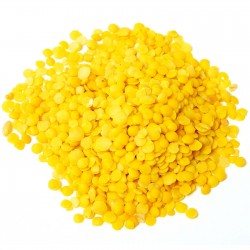
Yellow Lentil Seeds (Lens...
Price
€1.85
SKU: VE 82 Y (2.5g)
Seeds Gallery Com,
5/
5
<!DOCTYPE html>
<html>
<head>
<meta http-equiv="Content-Type" content="text/html; charset=UTF-8" />
</head>
<body>
<h2><strong>Yellow Lentil Seeds (Lens culinaris)</strong></h2>
<h2><span style="color: #ff0000;"><strong>Price for Package of </strong></span><span style="color: #ff0000;"><strong>100 (2.5g) </strong></span><span style="color: #ff0000;"><strong>seeds.</strong></span></h2>
<p>The lentil (Lens culinaris) is an edible pulse. It is a bushy annual plant of the legume family, grown for its lens-shaped seeds. It is about 40 cm (16 in) tall, and the seeds grow in pods, usually with two seeds in each.</p>
<p>Lentils have been part of the human diet since the aceramic (before pottery) Neolithic times, being one of the first crops domesticated in the Near East. Archeological evidence shows they were eaten 9,500 to 13,000 years ago.</p>
<p>Lentil colors range from yellow to red-orange to green, brown and black. Lentils also vary in size, and are sold in many forms, with or without the skins, whole or split.</p>
<p> </p>
<p>The seeds require a cooking time of 10 to 40 minutes, depending on the variety—shorter for small varieties with the husk removed, such as the common red lentil — and have a distinctive, earthy flavor. Lentil recipes[2] are used throughout South Asia, the Mediterranean regions and West Asia. They are frequently combined with rice, which has a similar cooking time. A lentil and rice dish is referred to in western Asia as mujaddara or mejadra. Rice and lentils are also cooked together in khichdi, a popular dish in the Indian subcontinent (India and Pakistan); a similar dish, kushari, made in Egypt, is considered one of two national dishes. Lentils are used to prepare an inexpensive and nutritious soup all over Europe and North and South America, sometimes combined with some form of chicken or pork.</p>
<p> </p>
<p>Dried lentils can also be sprouted by soaking in water for one day and keeping moist for several days, which changes their nutrition profile.</p>
<p>Lentils with husk remain whole with moderate cooking; lentils without husk tend to disintegrate into a thick purée, which leads to quite different dishes.</p>
<p> </p>
<p><strong>Nutritional value and health benefits</strong></p>
<p>With about 30% of their calories from protein, lentils have the third-highest level of protein, by weight, of any legume or nut, after soybeans and hemp.[4] Proteins include the essential amino acids isoleucine and lysine, and lentils are an essential source of inexpensive protein in many parts of the world, especially in West Asia and the Indian subcontinent, which have large vegetarian populations. Lentils are deficient in two essential amino acids, methionine and cysteine. However, sprouted lentils contain sufficient levels of all essential amino acids, including methionine and cysteine.</p>
<p>Lentils also contain dietary fiber, folate, vitamin B1, and minerals. Red (or pink) lentils contain a lower concentration of fiber than green lentils (11% rather than 31%).[8] Health magazine has selected lentils as one of the five healthiest foods.</p>
<p> </p>
<p>The low levels of Readily Digestible Starch (RDS) 5%, and high levels of Slowly Digested Starch (SDS) 30%, make lentils of great interest to people with diabetes. The remaining 65% of the starch is a resistant starch that is classified RS1, being a high quality resistant starch, which is 32% amylose.</p>
<p> </p>
<p>Lentils also have some anti-nutritional factors, such as trypsin inhibitors and relatively high phytate content. Trypsin is an enzyme involved in digestion, and phytates reduce the bio-availability of dietary minerals. The phytates can be reduced by soaking the lentils in warm water overnight.</p>
<p> </p>
<p>Lentils are a good source of iron, having over half of a person's daily iron allowance in a one cup serving.</p>
<p> </p>
<p><strong>Production</strong></p>
<p>Lentils are relatively tolerant to drought, and are grown throughout the world. The FAO reported that the world production of lentils for calendar year 2009 was 3.917 million metric tons, primarily coming from Canada, India, Turkey and Australia.</p>
<p> </p>
<p>About a quarter of the worldwide production of lentils is from India, most of which is consumed in the domestic market. Canada is the largest export producer of lentils in the world and Saskatchewan is the most important producing region in Canada. Statistics Canada estimates that Canadian lentil production for the 2009/10 year is a record 1.5 million metric tons.</p>
<p> </p>
<p>The Palouse region of eastern Washington and the Idaho panhandle, with its commercial center at Pullman, Washington, constitute the most important lentil-producing region in the United States. Montana and North Dakota are also significant lentil growers. The National Agricultural Statistics Service reported United States 2007 production at 154.5 thousand metric tons.</p>
<p> </p>
<p><strong>In culture</strong></p>
<p>The lens (double-convex shaped) is so called because the shape of a lens is basically the same shape as lentils. Lens is the Latin name for lentil.</p>
<p>Lentils are mentioned many times in the Hebrew Bible, the first time recounting the incident in which Jacob purchases the birthright from Esau with stewed lentils (a "mess of pottage").[16] In Jewish mourning tradition, lentils are traditional as food for mourners, together with boiled eggs, because their round shape symbolizes the life cycle from birth to death.</p>
<p> </p>
<p>Lentils were a chief part of the diet of ancient Iranians, who consumed lentils daily in the form of a stew poured over rice.</p>
<p>Lentils are also commonly used in Ethiopia in a stew-like dish called kik, or kik wot, one of the dishes people eat with Ethiopia's national food, injera flat bread. Yellow lentils are used to make a non-spicy stew, which is one of the first solid foods Ethiopian women feed their babies. In Pakistan, lentils are often consumed with Roti/bread or rice.</p>
<p> </p>
<p>In India, lentils soaked in water and sprouted lentils are offered to gods in many temples. It is also a practice in South India to give and receive sprouted peas by women who perform Varalakshmi Vratam. It is considered to be one of the best foods because the internal chemical structures are not altered by cooking.</p>
<p> </p>
<p>In Italy and Hungary, eating lentils on New Year's Eve traditionally symbolizes the hope for a prosperous new year, most likely because of their round, coin-like form.</p>
<p>In Shia narrations, lentils are said to be blessed by seventy Prophets, including Jesus and Mohammed.</p>
<p> </p>
</body>
</html>
VE 82 Y (2.5g)


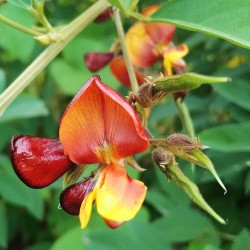
Pigeon pea seeds (Cajanus...
Price
€2.15
SKU: VE 48
Seeds Gallery Com,
5/
5
<h2><strong>Pigeon pea seeds (Cajanus cajan)</strong></h2>
<h2><span style="color: #ff0000;" class=""><strong>Price for Package of 10 (1.5g) seeds.</strong></span></h2>
<p>The<span> </span><b>pigeon pea</b><sup id="cite_ref-GRIN_1-0" class="reference"></sup><span> </span>(<i><b>Cajanus cajan</b></i>), also known as<span> </span><b>pigeonpea</b>,<span> </span><b>red gram</b>,<span> </span><b>tur</b>,<sup id="cite_ref-MoEFCC_2-0" class="reference"></sup><span> </span><b>pwa kongo</b><span> </span>in<span> </span>Haiti,<sup id="cite_ref-3" class="reference"></sup>,<span> </span><b>guandú</b><span> </span>and<span> </span><b>frijol de palo</b><span> </span>in<span> </span>Ibero-America, or as<span> </span><b>gungo peas</b><span> </span>in Jamaica,<sup id="cite_ref-4" class="reference"></sup><span> </span>is a perennial<span> </span>legume<span> </span>from the<span> </span>family<span> </span>Fabaceae. Since its<span> </span>domestication<span> </span>in the<span> </span>Indian subcontinent<span> </span>at least 3,500 years ago, its seeds have become a common<span> </span>food<span> </span>in Asia, Africa, and Latin America. It is consumed on a large scale in<span> </span>South Asia<span> </span>and is a major source of<span> </span>protein<span> </span>for the population of the Indian subcontinent. It is the primary accompaniment to rice or<span> </span>roti<span> </span>(flat bread) and has the status of<span> </span>staple food<span> </span>throughout the length and breadth of India.</p>
<h2><span class="mw-headline" id="Origins">Origins</span></h2>
<div class="thumb tright">
<div class="thumbinner"><img alt="Pigeon pea seeds (Cajanus cajan)" src="https://upload.wikimedia.org/wikipedia/commons/thumb/3/35/Pigeon_pea_flower_at_Sydney_2019.jpg/250px-Pigeon_pea_flower_at_Sydney_2019.jpg" decoding="async" width="250" height="166" class="thumbimage" srcset="//upload.wikimedia.org/wikipedia/commons/thumb/3/35/Pigeon_pea_flower_at_Sydney_2019.jpg/375px-Pigeon_pea_flower_at_Sydney_2019.jpg 1.5x, //upload.wikimedia.org/wikipedia/commons/thumb/3/35/Pigeon_pea_flower_at_Sydney_2019.jpg/500px-Pigeon_pea_flower_at_Sydney_2019.jpg 2x" data-file-width="4928" data-file-height="3264" title="Pigeon pea seeds (Cajanus cajan)" />
<div class="thumbcaption">
<div class="magnify"></div>
Pigeon pea flower at Sydney 2019</div>
</div>
</div>
<div class="thumb tright">
<div class="thumbinner"><img alt="Pigeon pea seeds (Cajanus cajan)" src="https://upload.wikimedia.org/wikipedia/commons/thumb/3/3e/Cajanus_cajan.jpg/220px-Cajanus_cajan.jpg" decoding="async" width="220" height="171" class="thumbimage" srcset="//upload.wikimedia.org/wikipedia/commons/thumb/3/3e/Cajanus_cajan.jpg/330px-Cajanus_cajan.jpg 1.5x, //upload.wikimedia.org/wikipedia/commons/thumb/3/3e/Cajanus_cajan.jpg/440px-Cajanus_cajan.jpg 2x" data-file-width="1986" data-file-height="1545" title="Pigeon pea seeds (Cajanus cajan)" />
<div class="thumbcaption">
<div class="magnify"></div>
Pigeon pea is a perennial which can grow into a small tree.</div>
</div>
</div>
<div class="thumb tright">
<div class="thumbinner"><img alt="Pigeon pea seeds (Cajanus cajan)" src="https://upload.wikimedia.org/wikipedia/commons/thumb/2/2d/Cajanus_cajan_MHNT.BOT.2015.2.47.jpg/220px-Cajanus_cajan_MHNT.BOT.2015.2.47.jpg" decoding="async" width="220" height="156" class="thumbimage" srcset="//upload.wikimedia.org/wikipedia/commons/thumb/2/2d/Cajanus_cajan_MHNT.BOT.2015.2.47.jpg/330px-Cajanus_cajan_MHNT.BOT.2015.2.47.jpg 1.5x, //upload.wikimedia.org/wikipedia/commons/thumb/2/2d/Cajanus_cajan_MHNT.BOT.2015.2.47.jpg/440px-Cajanus_cajan_MHNT.BOT.2015.2.47.jpg 2x" data-file-width="3182" data-file-height="2256" title="Pigeon pea seeds (Cajanus cajan)" />
<div class="thumbcaption">
<div class="magnify"></div>
<i>Cajanus cajan</i><span> </span>–<span> </span>MHNT</div>
</div>
</div>
<div class="thumb tright">
<div class="thumbinner"><img alt="Pigeon pea seeds (Cajanus cajan)" src="https://upload.wikimedia.org/wikipedia/commons/thumb/b/bc/Cajanus_cajan%2C_flowers.jpg/220px-Cajanus_cajan%2C_flowers.jpg" decoding="async" width="220" height="293" class="thumbimage" srcset="//upload.wikimedia.org/wikipedia/commons/thumb/b/bc/Cajanus_cajan%2C_flowers.jpg/330px-Cajanus_cajan%2C_flowers.jpg 1.5x, //upload.wikimedia.org/wikipedia/commons/thumb/b/bc/Cajanus_cajan%2C_flowers.jpg/440px-Cajanus_cajan%2C_flowers.jpg 2x" data-file-width="2448" data-file-height="3264" title="Pigeon pea seeds (Cajanus cajan)" />
<div class="thumbcaption">
<div class="magnify"></div>
Pigeon pea flowers</div>
</div>
</div>
<p>The cultivation of the pigeon pea goes back at least 3,500 years. The centre of origin is probably peninsular India, where the closest wild relatives (<i>Cajanus cajanifolia</i>) occur in tropical deciduous woodlands.<sup id="cite_ref-5" class="reference">[5]</sup><span> </span>Archaeological finds of pigeon pea dating to about 3,400 years ago (14th century BC) have been found at<span> </span>Neolithic<span> </span>sites in<span> </span>Kalaburagi, Karnataka<span> </span>(Sanganakallu) and its border areas (Tuljapur Garhi<span> </span>in<span> </span>Maharashtra<span> </span>and<span> </span>Gopalpur<span> </span>in<span> </span>Orissa) and also the south Indian states such as Kerala, where it is called Tomara Payaru.<sup id="cite_ref-6" class="reference">[6]</sup><span> </span>From India it traveled to East Africa and West Africa. There, it was first encountered by Europeans, so it obtained the name Congo Pea. By means of the slave trade, it came to the American continent, probably in the 17th century.<sup id="cite_ref-7" class="reference">[7]</sup></p>
<h2><span class="mw-headline" id="Cultivation">Cultivation</span></h2>
<p>Today, pigeon pea is widely cultivated in all tropical and semitropical regions of both the<span> </span>Old<span> </span>and the New Worlds.</p>
<p>World production of pigeon peas is estimated at 4.49 million tons.<sup id="cite_ref-:0_8-0" class="reference">[8]</sup><span> </span>About 63% of this production comes from India.<sup id="cite_ref-9" class="reference">[9]</sup><span> </span>Africa is the secondary centre of diversity and at present it contributes about 21% of global production with 1.05 million tons. Malawi, Tanzania, Kenya, Mozambique and Uganda are the major producers in Africa.</p>
<p>The total number of hectares grown to pigeon pea is estimated at 5.4 million.<sup id="cite_ref-:0_8-1" class="reference">[8]</sup><span> </span>India accounts for 72% of area grown to pigeon pea or 3.9 million hectares.</p>
<p>Pigeon pea is an important<span> </span>legume<span> </span>crop of<span> </span>rainfed agriculture<span> </span>in the semiarid tropics. The Indian subcontinent, eastern Africa and Central America, in that order, are the world's three main pigeon pea-producing regions. Pigeon peas are cultivated in more than 25 tropical and subtropical countries, either as a sole crop or intermixed with<span> </span>cereals, such as<span> </span>sorghum<span> </span>(<i>Sorghum bicolor</i>),<span> </span>pearl millet<span> </span>(<i>Pennisetum glaucum</i>), or<span> </span>maize<span> </span>(<i>Zea mays</i>), or with other legumes, such as<span> </span>peanuts<span> </span>(<i>Arachis hypogaea</i>). Being a legume capable of<span> </span>symbiosis<span> </span>with<span> </span>Rhizobia, the bacteria associated with the pigeon pea enrich soils through symbiotic<span> </span>nitrogen fixation.</p>
<p>Pigeon peas can be of a perennial variety, in which the crop can last three to five years (although the seed yield drops considerably after the first two years), or an annual variety more suitable for seed production.</p>
<p>The crop is cultivated on marginal land by resource-poor farmers, who commonly grow traditional medium- and long-duration (5–11 months)<span> </span>landraces. Short-duration pigeon peas (3–4 months) suitable for multiple cropping have recently been developed. Traditionally, the use of such input as fertilizers, weeding, irrigation, and pesticides is minimal, so present yield levels are low (average = 700 kg/ha). Greater attention is now being given to managing the crop because it is in high demand at remunerative prices.</p>
<p>Pigeon peas are very drought-resistant and can be grown in areas with less than 650 mm annual rainfall. With the maize crop failing three out of five years in drought-prone areas of<span> </span>Kenya, a consortium led by the<span> </span>International Crops Research Institute for the Semi-Arid Tropics<span> </span>(ICRISAT) aimed to promote the pigeon pea as a drought-resistant, nutritious alternative crop.</p>
<p>John Spence, a<span> </span>botanist<span> </span>and politician from<span> </span>Trinidad and Tobago, developed several varieties of dwarf pigeon peas which can be harvested by machine, instead of by hand.<sup id="cite_ref-niherst_10-0" class="reference">[10]</sup></p>
<h2><span class="mw-headline" id="Seeds_and_chafe">Seeds and chafe</span></h2>
<h3><span class="mw-headline" id="Dehulling_methods">Dehulling methods</span></h3>
<p>Dehulling pigeon peas is an age-old practice in India. In earlier days hand pounding was common. Several traditional methods are used that can be broadly classified under two categories:</p>
<h4><span class="mw-headline" id="Wet_method">Wet method</span></h4>
<p>Involves water soaking, sun drying, and dehulling.</p>
<h4><span class="mw-headline" id="Dry_method">Dry method</span></h4>
<p>Involves oil/water application, drying in the sun, and dehulling. Depending on the magnitude of operation, large-scale commercial dehulling of large quantities of pigeon pea into its deskinned, split version, known as toor<span> </span>dal<span> </span>in Hindi, is done in mechanically operated mills.<sup id="cite_ref-12" class="reference"></sup></p>
<h2><span class="mw-headline" id="Uses">Uses</span></h2>
<div class="thumb tright">
<div class="thumbinner"><img alt="Pigeon pea seeds (Cajanus cajan)" src="https://upload.wikimedia.org/wikipedia/commons/thumb/a/a2/Tur_Dal.JPG/220px-Tur_Dal.JPG" decoding="async" width="220" height="165" class="thumbimage" srcset="//upload.wikimedia.org/wikipedia/commons/thumb/a/a2/Tur_Dal.JPG/330px-Tur_Dal.JPG 1.5x, //upload.wikimedia.org/wikipedia/commons/thumb/a/a2/Tur_Dal.JPG/440px-Tur_Dal.JPG 2x" data-file-width="2816" data-file-height="2112" title="Pigeon pea seeds (Cajanus cajan)" />
<div class="thumbcaption">
<div class="magnify"></div>
Split pigeon pea, used in making<span> </span><i>Daal/Pappu,</i><span> </span>a daily staple in India</div>
</div>
</div>
<div class="thumb tright">
<div class="thumbinner"><img alt="Pigeon pea seeds (Cajanus cajan)" src="https://upload.wikimedia.org/wikipedia/commons/thumb/1/16/Dal_Fry_Tadka%2C_Cumin_Rice%2C_Roasted_Papad_on_the_side.jpg/220px-Dal_Fry_Tadka%2C_Cumin_Rice%2C_Roasted_Papad_on_the_side.jpg" decoding="async" width="220" height="220" class="thumbimage" srcset="//upload.wikimedia.org/wikipedia/commons/thumb/1/16/Dal_Fry_Tadka%2C_Cumin_Rice%2C_Roasted_Papad_on_the_side.jpg/330px-Dal_Fry_Tadka%2C_Cumin_Rice%2C_Roasted_Papad_on_the_side.jpg 1.5x, //upload.wikimedia.org/wikipedia/commons/thumb/1/16/Dal_Fry_Tadka%2C_Cumin_Rice%2C_Roasted_Papad_on_the_side.jpg/440px-Dal_Fry_Tadka%2C_Cumin_Rice%2C_Roasted_Papad_on_the_side.jpg 2x" data-file-width="1944" data-file-height="1944" title="Pigeon pea seeds (Cajanus cajan)" />
<div class="thumbcaption">
<div class="magnify"></div>
<i>Dal/Pappu</i><span> </span>and rice, the twice-daily staple meal for most people in<span> </span>India<span> </span>and the Indian subcontinent.</div>
</div>
</div>
<p>Pigeon peas are both a food crop (dried peas, flour, or green vegetable peas) and a forage/cover crop. In combination with<span> </span>cereals, pigeon peas make a well-balanced meal and hence are favoured by nutritionists as an essential ingredient for balanced diets. The dried peas may be sprouted briefly, then cooked, for a flavor different from the green or dried peas. Sprouting also enhances the digestibility of dried pigeon peas via the reduction of indigestible sugars that would otherwise remain in the cooked dried peas.<sup id="cite_ref-13" class="reference">[13]</sup></p>
<p>In India, it is one of the most popular<span> </span>pulses, being an important source of protein in a mostly vegetarian diet. In regions where it grows, fresh young pods are eaten as a vegetable in dishes such as<span> </span><i>sambar</i>. Whole pigeon peas are called<span> </span><i>arhar dal</i><span> </span>in<span> </span>Hindi. In<span> </span>Ethiopia, not only the pods, but also the young shoots and leaves are cooked and eaten.<sup id="cite_ref-14" class="reference">[14]</sup></p>
<div class="thumb tright">
<div class="thumbinner"><img alt="Pigeon pea seeds (Cajanus cajan)" src="https://upload.wikimedia.org/wikipedia/commons/thumb/1/1c/Shelling_pigeonpeas%2C_Kenya.jpg/220px-Shelling_pigeonpeas%2C_Kenya.jpg" decoding="async" width="220" height="147" class="thumbimage" srcset="//upload.wikimedia.org/wikipedia/commons/thumb/1/1c/Shelling_pigeonpeas%2C_Kenya.jpg/330px-Shelling_pigeonpeas%2C_Kenya.jpg 1.5x, //upload.wikimedia.org/wikipedia/commons/thumb/1/1c/Shelling_pigeonpeas%2C_Kenya.jpg/440px-Shelling_pigeonpeas%2C_Kenya.jpg 2x" data-file-width="5184" data-file-height="3456" title="Pigeon pea seeds (Cajanus cajan)" />
<div class="thumbcaption">
<div class="magnify"></div>
Kenyans shelling pigeon peas</div>
</div>
</div>
<p>In some places, such as the Caribbean coast of<span> </span>Colombia,<span> </span>Dominican Republic,<span> </span>Panama<span> </span>and Hawaii, pigeon peas are grown for canning and consumption. A dish made of rice and green pigeon peas (called<span> </span><i>moro de guandules</i>) is a traditional food in the Dominican Republic. Pigeon peas are also made as a stew, with<span> </span>plantain<span> </span>balls. In<span> </span>Puerto Rico,<span> </span><i>arroz con gandules</i><span> </span>is made with<span> </span>rice<span> </span>and pigeon peas and is a traditional dish, especially during Christmas season.<span> </span>Jamaica<span> </span>also uses pigeon peas instead of kidney beans in their<span> </span><i>rice and peas</i><span> </span>dish, especially at Christmastime.<span> </span>Trinidad and Tobago<span> </span>and<span> </span>Grenada<span> </span>have their own variant, called<span> </span><i>pelau</i>, which includes either beef or chicken, and occasionally pumpkin and pieces of cured pig tail. In the<span> </span>Atlántico department<span> </span>of Colombia, the<span> </span>sopa de guandú con carne salada<span> </span>(or simply "gandules") is made with pigeon peas.</p>
<p>Unlike in some other parts of the Greater Caribbean, in<span> </span>The Bahamas<span> </span>the light brown colored dried seeds of the pigeon pea plant are used (instead of the fresh green pigeon peas used elsewhere) to make the heartier, heavier, signature Bahamian staple dish "Peas 'n Rice." A slab of partially cubed or diced pork "fatback" lard with skin on (bacon is a common substitute), diced onions and sweet pepper, and a mixture of spices are all sauteed in the bottom of a deep pot. Tomatoes and tomato paste are added. Then water is added along with the peas and rice, and slow boiled until tender. The dish becomes a medium-dark brown color, resulting from absorbing the colors of the browned initial ingredients and the cooked tomato paste. The pigeon peas themselves absorb the same, becoming a much darker brown, providing some contrast while still complementing the distinctive "browned" theme of the dish.<sup id="cite_ref-15" class="reference">[15]</sup></p>
<p>In<span> </span>Thailand, pigeon peas are grown as a host for<span> </span>scale insects<span> </span>which produce<span> </span>lac, the key ingredient in<span> </span>shellac.</p>
<p>Pigeon peas are in some areas an important crop for<span> </span>green manure, providing up to 90 kg nitrogen per hectare.<sup id="cite_ref-16" class="reference">[16]</sup><span> </span>The woody stems of pigeon peas can also be used as firewood, fencing and thatch.</p>
<p>It is an important ingredient of animal feed used in West Africa, especially in Nigeria, where it is also grown. Leaves, pods, seeds and the residues of seed processing are used to feed all kinds of livestock.<sup id="cite_ref-17" class="reference">[17]</sup></p>
<h2><span class="mw-headline" id="Genome_sequence">Genome sequence</span></h2>
<p>The pigeon pea is the first seed legume plant to have its complete genome sequenced. The sequencing was first accomplished by a group of 31 Indian scientists from the<span> </span>Indian Council of Agricultural Research. It was then followed by a global research partnership, the International Initiative for Pigeonpea Genomics (IIPG), led by<span> </span>ICRISAT<span> </span>with partners such as BGI–Shenzhen (China), US research laboratories like University of Georgia, University of California-Davis, Cold Spring Harbor Laboratory, and National Centre for Genome Resources, European research institutes like the National University of Ireland Galway. It also received support from the CGIAR Generation Challenge Programme, US National Science Foundation and in-kind contribution from the collaborating research institutes.<sup id="cite_ref-18" class="reference">[18]</sup><sup id="cite_ref-19" class="reference">[19]</sup><span> </span>It is the first time that a CGIAR-supported research center such as ICRISAT led the genome sequencing of a food crop. There was a controversy over this as CGIAR did not partner with a national team of scientists and broke away from the Indo American Knowledge Initiative to start their own sequencing in parallel.<sup id="cite_ref-20" class="reference">[20]</sup></p>
<p>The 616 mature<span> </span>microRNAs<span> </span>and 3919<span> </span>long non-codingRNAs<span> </span>sequences were identified in the genome of pigeon pea.</p>
<script src="//cdn.public.n1ed.com/G3OMDFLT/widgets.js"></script>
VE 48 (1.5g)






